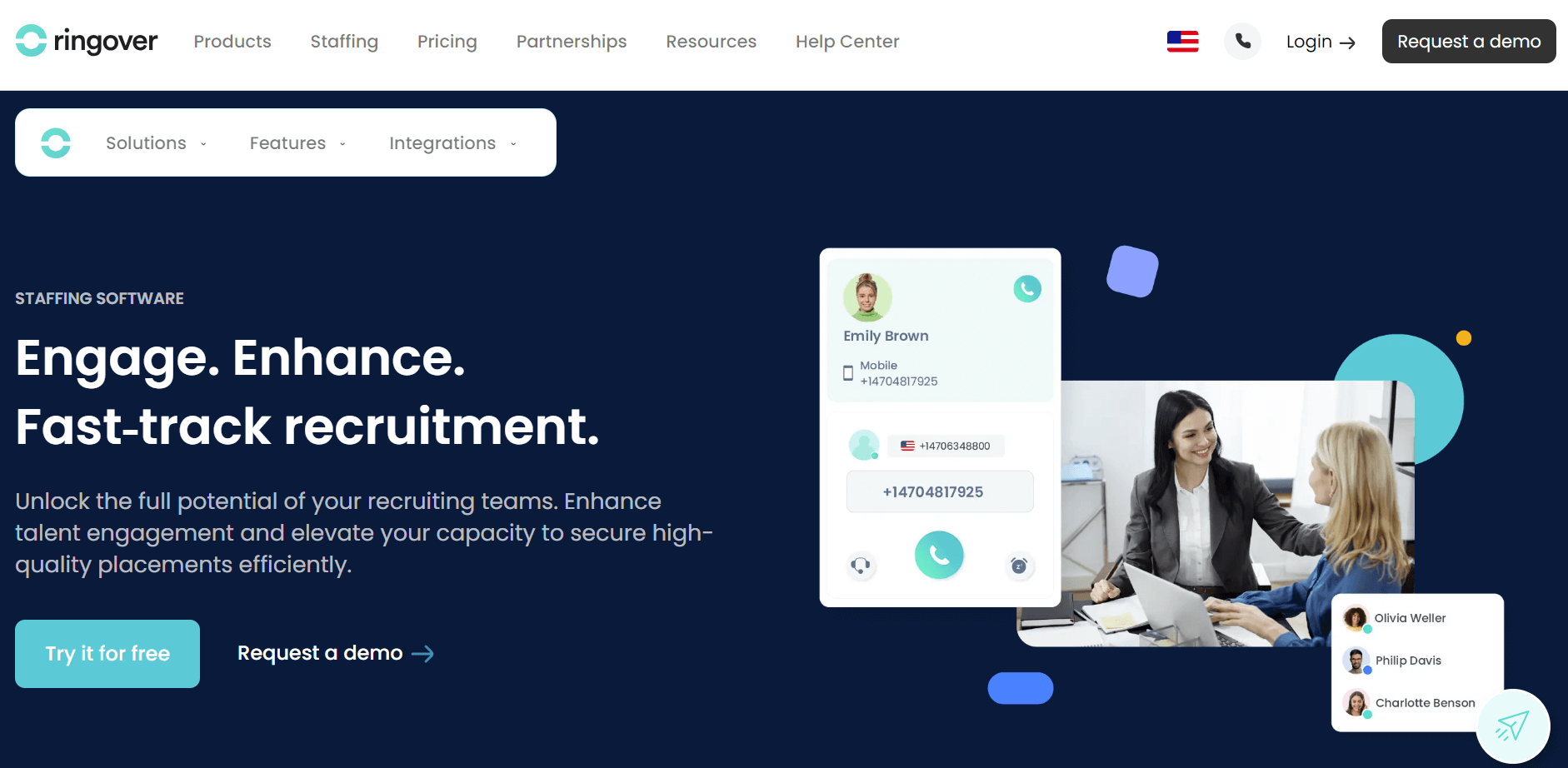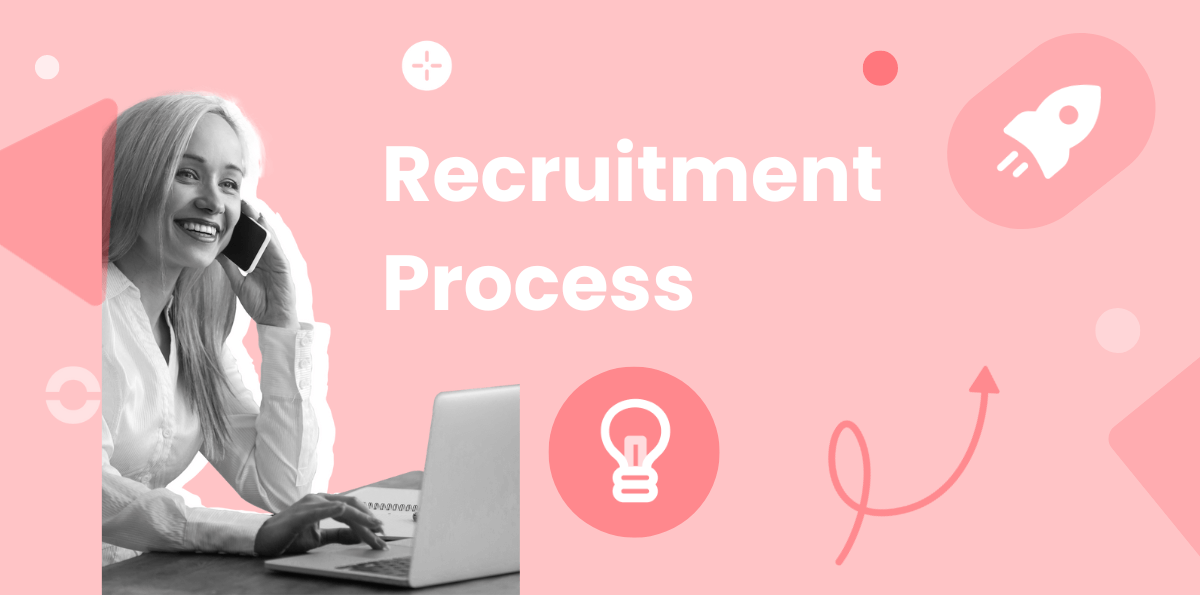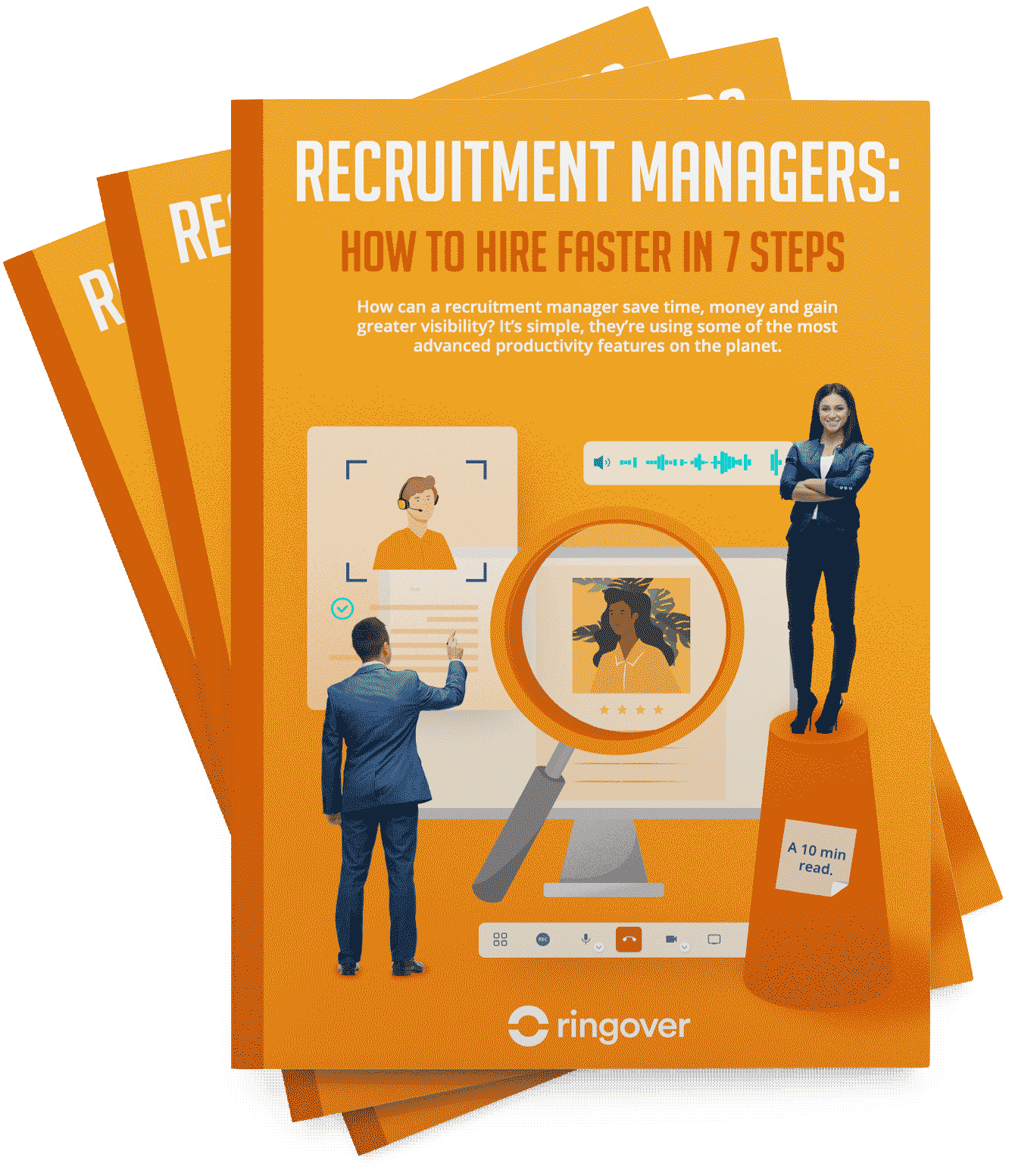Summary
Often key to a company's growth, the recruitment process involves a series of actions to be taken in order to find the right talent for the right job.
This process can be complex and time-consuming, two characteristics that tend to clash with your company's profitability goals.
So, what can you do to optimize this process? What are the steps to follow and, above all, what's at stake?
Recruitment process: the definition
The recruitment process involves all of the actions, of varying complexity, that a company needs to take to identify and attract potential talent, as well as to evaluate candidates and determine who is best-suited to a given position. Traditionally, there are 7 stages in the recruitment process.
What are the 7 steps to effective recruiting?
The quality of your recruitment process depends on the methodology you adopt. We don't need to tell you: it's essential to have the right framework and recruitment tools to perform. Here are the 7 steps to effective recruitment:
- Identifying recruitment needs
- Writing and sharing the job offer
- Sorting through applications
- Interviews
- Tests and evaluations
- Checking references
- New employee onboarding
1. Identifying recruitment needs
This first essential step will determine the success of all the others. It allows us to define the contours of the profile we're looking for, and is based on questions such as:
- What is the job description?
- Is it a senior or junior profile?
- How many years of experience are required?
- What training or qualifications are required for this position?
- What kind of work will they be doing?
- What technical or behavioral skills are required?
- What type of contract is best?
- What is the fairest pay range?
- What's at stake with this position?
- What will the recruit's responsibilities be, and which department will they report to?
You'll need to talk to the people who will be managing this new recruit to understand their needs and to fine-tune the profile. A precise and detailed job description reduces the risk of getting lots of unsuitable applications, and also optimizes your performance indicators as a recruiter.
2. Writing and sharing the job offer
Once you've identified your needs and defined the profile you're looking for, you have two options:
- Recruit internally. In this case, check that the profile matches that of your employees, particularly those who would get priority (staff on maternity leave, employees made redundant, employees moving from part-time to full-time or vice versa).
- Recruit a new employee. If this is the case, it's time to write up the job offer and post it/share it through the various channels available to you: social media, job boards, websites, recruitment agencies.
The vast majority of recruitment software include functions for multi-posting job offers. This is an option worth considering.
However, make sure you use channels that are aligned with the type of profile you're looking for, to ensure you receive applications that match your profile.
3. Sorting through applications
This third stage involves reviewing the resumes and cover letters received. The most relevant applications will then be selected according to pre-established criteria.
4. Interviews
A pivotal stage in the recruitment process, the interview enables the recruiter to check that the profiles selected in step 3 are suitable for the position.
During the interview, it's essential to ask questions to assess the skills, experience and motivations of these profiles, and their suitability for the job requirements.
There may be several interviews, and candidates are likely to be tested through role-playing exercises as well as psycho-technical and behavioral evaluations in order to refine the selection process.
5. Checking references
Once a candidate has been selected, you can collect more information about their professional experience, teamwork skills and achievements by contacting former employees or managers.
6. Candidate selection
That's it, the interview phase is over. Confirm the validated profile(s) with the future manager(s). Be sure to tell the recruit the good news in a warm and personal way. Any unsuccessful candidates should be added to the company's applicant pool.
This selection phase is also characterized by administrative formalities such as sending over their employment contract for them to review, entering the recruit into the staff records, drawing up and signing the final employment contract, and scheduling a medical examination.
7. New employee integration
Signing the contract does not mean that recruitment is over. It is essential to plan an integration process to facilitate the new employee's arrival at the company and give them everything they need to thrive in their new role.
Each of these stages can be optimized to smooth the process and ensure that the recruitment team achieves its objectives.
Recruitment processes: what's at stake in 2024?
In a fluctuating economic climate and in the face of new trends, companies are faced with challenges that are shaping the way they attract and select the best talent. What are these challenges, and how can we meet them?
Attracting the best talent 🟩
This task is not an easy one: the competition can be fierce, especially in sectors where positions are few and far between.
As an employer, and more specifically as a recruiter, it can be difficult to find the right balance between fine-tuning and sufficient flexibility in the final selection and remuneration.
To meet this challenge, there are several possible approaches:
- Provide as many details in the job description as possible, keeping it precise and exhaustive. This way, candidates quickly understand what is expected of them, and can project themselves more easily.
- Develop inbound recruiting to raise awareness of your company and engage potential candidates by regularly communicating information about your company.
Improving the candidate experience 🟩
Lack of feedback and process complexity clearly impact the candidate experience. To remain competitive, organizations need to adopt innovative strategies that enhance their employer brand and corporate culture. Improving the candidate experience involves :
- Career site optimization
- Efforts to improve communication with candidates through more feedback, more personalized interactions and better omnichannel management to make exchanges more fluid.
- Streamlined application system with simple forms
Evaluating skills 🟩
Skill evaluations are used to assess a candidate's ability to perform specific tasks and demonstrate expertise in a particular subject.
Nevertheless, these evaluations, which are supposed to bring impartiality to the recruitment process, can be fraught with subjectivity.
What's more, it can be complicated to standardize them if clear norms are not directly pre-established between stakeholders.
So, it's important for the company to be consistent in the way it implements evaluations.
Reduce recruitment time 🟩
The length of the recruitment process has a significant impact on a company's business. By shortening the time between publication of the vacancy and integration of the new employee as much as possible, the company reduces productivity losses and helps to achieve its overall objectives.
However, shortening the lead time must not compromise the quality of the recruitment, which is why it is so important to ensure that each stage of the process is carefully planned and executed.
Improving ROI 🟩
Recruitment is a strategic investment. Generally speaking, a company's success is built on the recruitment of the right employees. So, if that's the case, why do so few companies measure their ROI when it comes to recruitment?
Well, it appears to be partially due to the inherent complexity of the recruitment process. It's difficult to identify and choose the right indicators for assessing the costs associated with recruitment. The same applies to calculating added value. So, how do you go about identifying these two points?
To improve the ROI of your recruitment process, list :
- Visible costs such as the time spent by recruiters in drafting offers, hunting, interviewing and onboarding, structural costs (administrative and company telephone costs), job board platform costs and recruitment software costs.
- Invisible costs such as the number of hours spent by managers involved in the recruitment process, multiplied by their hourly wage, as well as any structural costs.
Next, list the benefits provided, using indicators such as the performance of new recruits, their progression within the company, their stability, and the revenue gains generated by their contribution.
Finally, apply the time-honored formula:
ROI = ((benefits - costs) / Costs) x 100
Adopt the right recruitment tools 🟩

The standards, technologies, and tools used for recruitment are constantly evolving and at swift pace, as particularly seen with the revolution of artificial intelligence. It can be difficult to keep up with these developments, or to put a plan in place to implement them properly.
To keep abreast of trends and discover new tools, one of the options available to you is to attend HR events.
How to improve your recruitment process - our guide
To improve your recruitment process, it's important to consider best practices.
1. Develop your employer brand
Today, employer branding is a must-have for companies wishing to attract and retain top talent.
But where do you start? Here are 3 tips to help you along the way.
- We recommend that you first identify what makes your company unique: its vision, mission, values, culture and business needs.
- It's also important to assess how your company is perceived, both internally and externally. To do this, ask your employees through surveys, collect reviews and ratings of your company on job boards, and scrutinize what's being said about you on social media by monitoring mentions and hashtags specific to your company and your industry.
- One way to strengthen or develop your employer brand is to turn your employees into ambassadors or advocates. After all, who better than your employees to talk about their experience with your organization? This ambassadorial mission can be carried out via social media and other recruitment channels (media, job boards), in video testimonials for example.
2. Call on your collaborators
In line with employer brand development, if you have the opportunity to involve other employees in the recruitment process (outside the HR team), seize it.
You can use co-optation by setting up a reward system for your employees who source profiles matching the criteria of open positions.
3. Simplify the application process
Overcomplicated application processes can make some candidates feel uncomfortable, or even turn them away. Simplify yours as much as possible:
- Use short forms, easy to fill in from a computer screen or smartphone.
- Allow candidates to send you files in different formats for their RESUMEs and cover letters.
- Propose a reasonable file size and number limit.
4. Make the most of your application tracking software
It's crucial to calibrate your candidate follow-up system to ensure that you support them throughout the recruitment process.
Opt for ATS software offering advanced personalization features, both in terms of message content and the channels chosen.
Your ATS must enable you to identify the communication channels preferred by candidates to offer them the best possible experience.
5. Integrate your tools
As we mentioned earlier in this article, certain tasks such as sourcing, RESUME analysis and interview scheduling are very time-consuming. One way to reduce the time spent on these tasks is to combine your existing tools through software integrations.
For example, you can integrate your corporate telephony or videoconferencing software with your ATS to save time on every call. Such integration also enables you to improve candidate reception.
In fact, by automatically displaying candidates' files when they call you, you can personalize your exchanges more effectively.
6. Create your own talent pool
A candidate pool isn't just a box in which you record all the talent you come into contact with. It must be able to provide you with information on the qualities and personality of each talent, so that you can react quickly when a position becomes available.
Make sure that it includes the names of your current employees, trainees and former candidates and employees.
Ready to optimize your recruitment process?
You now have some ideas for improving your recruitment process. In the face of the competition, make sure you offer a quality candidate experience to the talents who apply to you.
Take great care at every stage of the recruitment process, and improve your ROI by taking into account the so-called invisible costs.
Optimizing the recruitment process is also based on a sourcing strategy in line with the company's needs, and the right combination of tools.
To find out more about how Ringover can support you in this optimization, discover our products and services dedicated to recruitment teams (Empower and Ringover), try them out or ask for a demonstration from our experts.
FAQ Recruitment process
What are the stages in the recruitment process?
The recruitment process generally consists of 7 stages:
- Identifying recruitment needs
- Distributing the offer
- Sorting applications
- Selection interviews
- Skills tests and evaluations
- Checking references
- New employee integration
What is the best recruitment process?
Each company has its own specificities and constraints, and there is no consensus on which recruitment process is the best.
Nevertheless, there are a number of best practices that combine human expertise and technology to improve the quality and efficiency of the recruitment process:
- Developing your employer brand
- Involve employees outside the HR department
- Streamline the application process
- Cleverly combining and configuring tools
- Creating a talent pool
What are the key stages in an effective recruitment interview?
Here are the 5 steps to a good job interview:
- Structure and prepare the interview in advance.
- Welcoming the candidate, reminding them of the context of the interview and how it will be conducted.
- Conducting the interview by gathering information on the candidate's experience and motivation, discussing the RESUME, etc.
- Take a moment to talk freely and share other elements related to the position, the company or the team, for example.
- Conclude the job interview.
Why set up a recruitment process?
Successful recruitment ensures that your company has all the resources it needs to achieve its day-to-day objectives. An efficient recruitment process is essential to ensure that the best recruitment decisions are made to meet current and future business needs.
Published on May 6, 2024.


